Input interpretation

dinitrogen pentoxide
Chemical names and formulas
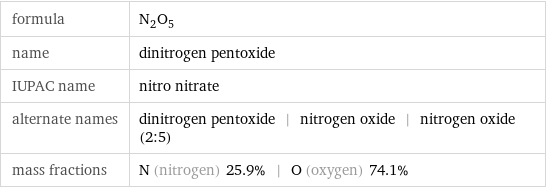
formula | N_2O_5 name | dinitrogen pentoxide IUPAC name | nitro nitrate alternate names | dinitrogen pentoxide | nitrogen oxide | nitrogen oxide (2:5) mass fractions | N (nitrogen) 25.9% | O (oxygen) 74.1%
Lewis structure
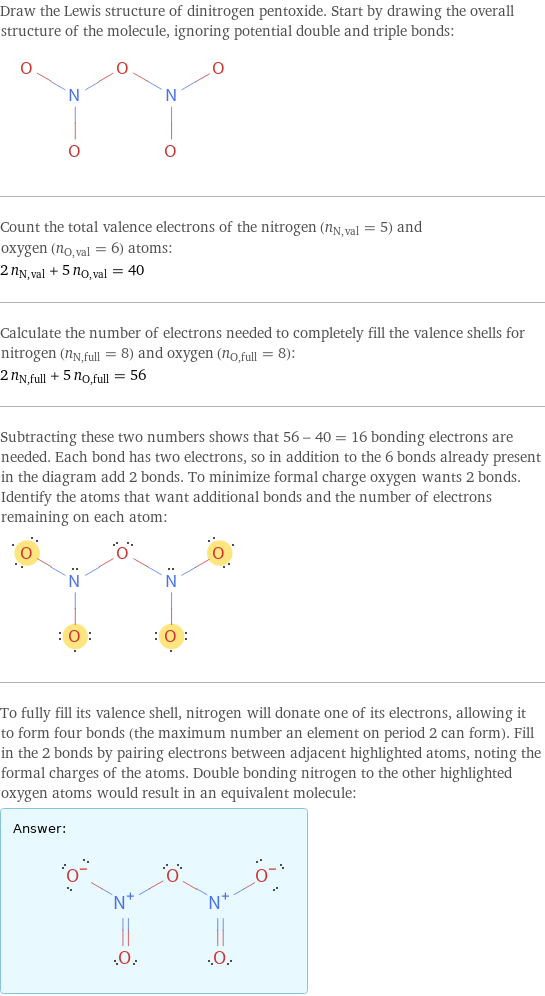
Draw the Lewis structure of dinitrogen pentoxide. Start by drawing the overall structure of the molecule, ignoring potential double and triple bonds: Count the total valence electrons of the nitrogen (n_N, val = 5) and oxygen (n_O, val = 6) atoms: 2 n_N, val + 5 n_O, val = 40 Calculate the number of electrons needed to completely fill the valence shells for nitrogen (n_N, full = 8) and oxygen (n_O, full = 8): 2 n_N, full + 5 n_O, full = 56 Subtracting these two numbers shows that 56 - 40 = 16 bonding electrons are needed. Each bond has two electrons, so in addition to the 6 bonds already present in the diagram add 2 bonds. To minimize formal charge oxygen wants 2 bonds. Identify the atoms that want additional bonds and the number of electrons remaining on each atom: To fully fill its valence shell, nitrogen will donate one of its electrons, allowing it to form four bonds (the maximum number an element on period 2 can form). Fill in the 2 bonds by pairing electrons between adjacent highlighted atoms, noting the formal charges of the atoms. Double bonding nitrogen to the other highlighted oxygen atoms would result in an equivalent molecule: Answer: | |
3D structure
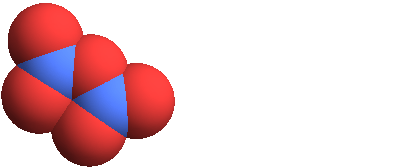
3D structure
Basic properties
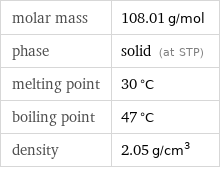
molar mass | 108.01 g/mol phase | solid (at STP) melting point | 30 °C boiling point | 47 °C density | 2.05 g/cm^3
Units

Solid properties (at STP)

density | 2.05 g/cm^3
Units

Thermodynamic properties
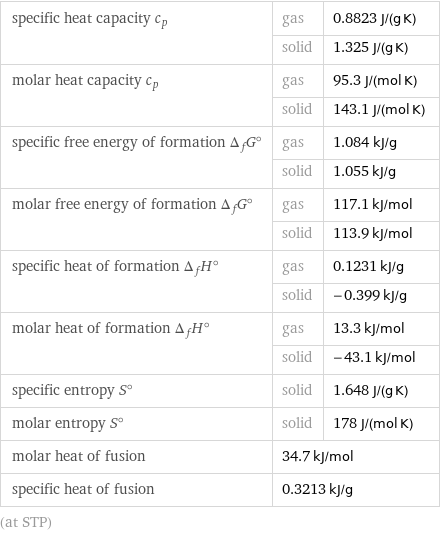
specific heat capacity c_p | gas | 0.8823 J/(g K) | solid | 1.325 J/(g K) molar heat capacity c_p | gas | 95.3 J/(mol K) | solid | 143.1 J/(mol K) specific free energy of formation Δ_fG° | gas | 1.084 kJ/g | solid | 1.055 kJ/g molar free energy of formation Δ_fG° | gas | 117.1 kJ/mol | solid | 113.9 kJ/mol specific heat of formation Δ_fH° | gas | 0.1231 kJ/g | solid | -0.399 kJ/g molar heat of formation Δ_fH° | gas | 13.3 kJ/mol | solid | -43.1 kJ/mol specific entropy S° | solid | 1.648 J/(g K) molar entropy S° | solid | 178 J/(mol K) molar heat of fusion | 34.7 kJ/mol | specific heat of fusion | 0.3213 kJ/g | (at STP)
Chemical identifiers
([O-])O[N+](=O)[O-] InChI identifier | InChI=1/N2O5/c3-1(4)7-2(5)6 EU number | 233-264-2 Gmelin number | 2466](../image_source/a4b5edf0e4f11c37fdb36fff083b2586.png)
CAS number | 10102-03-1 PubChem CID number | 66242 SMILES identifier | [N+](=O)([O-])O[N+](=O)[O-] InChI identifier | InChI=1/N2O5/c3-1(4)7-2(5)6 EU number | 233-264-2 Gmelin number | 2466
NFPA label

NFPA label

NFPA health rating | 3 NFPA fire rating | 0 NFPA reactivity rating | 0 NFPA hazards | oxidizing agent